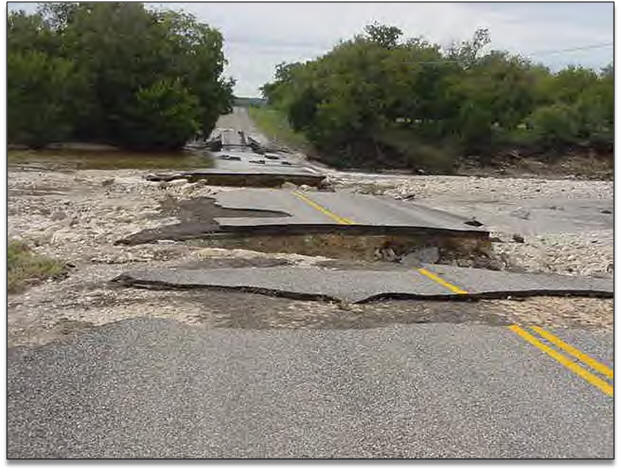Project 0-4695
Guidance for Design in Areas of Extreme Bed-Load Mobility
Abstract
The purpose of this report is to present results from a combination of field and laboratory investigations of mobility of gravel to cobble sized materials in Texas streams on the Edwards Plateau. TxDOT uses low-water crossings for many of the roadways in the region, particularly where the streams are ephemeral. When the streambed mobilizes, instances of roadway loss of service, either by deposition of large amounts of bed materials or by structural failure associated with streambed mobilization are relatively common. The objectives of the project were to determine the mechanics of streambed mobilization and develop design guidelines (approaches) to mitigate damage associated with streambed mobilization events. Numerical models were developed and a GIS approach was used to demonstrate how area subject to streambed mobilization can be identified through application of these tools. Physical models were used to demonstrate the mechanics of streambed mobilization and test current design solutions. The physical model identified the mechanics for culvert "self-clearing" and that a porous roadbed results in changes to the flow dynamics that affect bedload deposition in the low-water crossing area. An offset three-culvert design was identified by TxDOT engineers as an alternative to the more-common box culvert.

Project PI: David B. Thompson
Project Researchers: Theodore G. Cleveland
Center for Multidisciplinary Research in Transportation (TechMRT)
-
Address
Texas Tech University, Box 41023, Lubbock, TX 79409-1023 -
Phone
806.742.3523 -
Email
techmrt.outreach@ttu.edu
